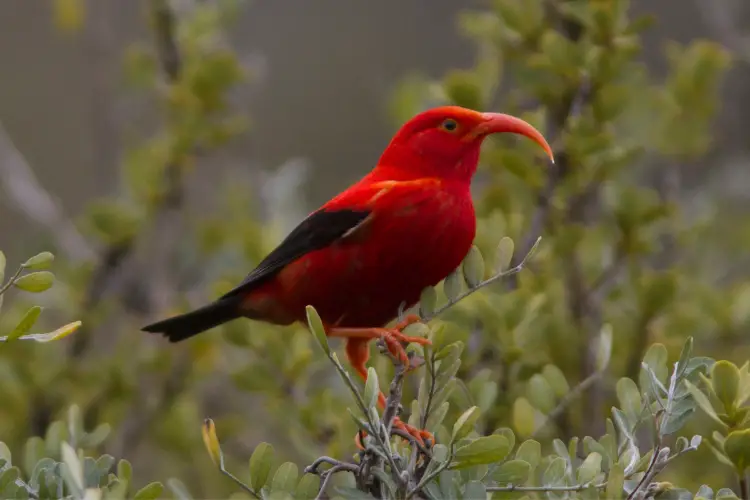Birds captivate us with their breathtaking diversity, behaviors, and songs. Yet avian populations worldwide now face accelerating threats driving many species towards extinction. Habitat loss, invasive predators, exploitation, and climate change all contribute to declines.
In this blog post, we will profile 70 endangered bird species at the greatest risk of vanishing from habitats they’ve occupied for millennia. Discover some of our planet’s rarest birds and learn how protecting critical areas and addressing key threats may secure their futures.
Critically Endangered Hawaiian Honeycreepers
These spectacularly colored songbirds evolved to fill specialized niches in Hawaii’s forests. But habitat destruction and mosquito-borne diseases have now pushed multiple species to the brink.
1. Po’ouli. This wary brown honeycreeper with a black mask persists in a tiny remnant of forest on Maui’s windward slopes, with likely under 100 surviving individuals.
2. ‘Akiapola’au. Distinguished by a strikingly curved bill used to pry bark and excavate tunnels through wood in search of grubs and larvae. Today perhaps 3,000 or fewer remain.
3. Hawai’i creeper. Uses bill to probe crevices along large tree trunks for arthropods. Once abundant and widespread across Hawaii’s biggest island, now clinging to existence with under 350 left in the wild.
4. ‘Akikiki. With brilliant scarlet above its eye and crow-black plumage, adults frequent canopy and subcanopy across Kaua’i searching for insects and spiders. However extensive mosquito-transmitted disease in native forests leaves potentially fewer than 1,500 still flying in the wild.
5. ‘Akeke’e. A vivid orange-and-green honeycreeper of Kaua’i now reduced to under 3,500 individuals by habitat degradation and deadly bird malaria. It frequents native ‘ōhi’a and koa trees searching for arthropods.

Critically Endangered Seabirds Worldwide
Seabirds nest on remote islands away from mainland predators. But invasive species and human disturbance now imperil multiple species, as do marine pollution and unsustainable fishing diminishing food sources.
6. Balearic shearwater. Breeds only in the Balearic Islands of Spain with under 2000 breeding pairs remaining. Threats include bycatch, invasive predators, lack of fish prey, pollution and human disturbance.
7. Beck’s petrel. Whale-like petrels named for an early specimen collector, around 250 pairs breed only in remote forests on New Ireland Island off Papua New Guinea. Predation and habitat degradation drive declines.
8. Chatham albatross. Globally important albatross breeding site now jeopardized by ocean warming, rising seas, more extreme storms, plastic pollution and unsustainable fishing practices driving their decline below 8,000 remaining pairs.
9. Chinese crested tern. Wild groups likely number fewer than 50 total individuals; the world’s second-rarest seabird. Loss of breeding habitat and food sources threaten this migratory fish-eating species.
10. Christmas frigatebird. Around 1,200 pairs of this seabird soar above tropical reefs around Christmas Island. Mining and climate change impacts may soon push them beyond recovery.
11. Fiji petrel. Whale-like petrels whose existence remained unknown until 1983. Just 19 breeding pairs confirmed to date on Gau Island, making this species among the world’s rarest seabirds.
12. Guadalupe murrelet. This ancient auk inhabits coastal waters around Guadalupe Island, Mexico. Predators like cats along with marine habitat degradation leave around 6,000-18,000 individuals remaining.
13. Junín grebe. Only around 250 adults estimated to remain for this species that breeds exclusively on a single lake in central Peru’s Lake Junin basin. It dives from the water’s surface chasing small fish, tadpoles and water beetles to eat.
14. Magenta petrel. First described to science in 2008; around 20 breeding pairs found so far scattered across geographically isolated mountaintops on Tahiti. Predation by invasive species drives declines.
15. Newell’s shearwater. Once abundant, this medium-sized seabird returned en masse at dusk to Hawaiian Islands after fishing all day out at sea. Persistent threats on breeding colonies put them at risk of extinction.
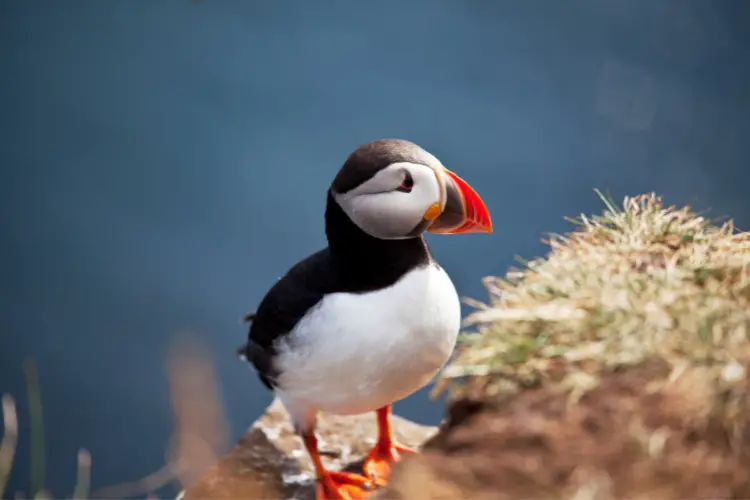
Critically Endangered Raptors Worldwide
From Philippine eagles to California condors, multiple bird of prey species now balance on the brink due to threats including habitat loss, poaching and lead poisoning.
16. California condor. Intensive recovery efforts rescued this New World vulture from extinction in the 1980s when fewer than 25 birds remained. Lead poisoning and habitat loss remain threats for the 463 individuals flying today.
17. Javan hawk-eagle. Fewer than 100 breeding pairs persist for this Indonesian raptor today. Rapid destruction of tropical rainforest forces it towards extinction.
18. Madagascar fish eagle. Deforestation along waterways and wetlands leaves under 300 breeding pairs holding on mostly in the island’s north and west. Without urgent conservation action, this iconic eagle will likely soon disappear altogether.
19. Philippine eagle. Massive deforestation plus hunting and trade capture for the pet trade have decimated the population of this giant forest raptor to around 400 breeding pairs. It now mainly occurs on eastern Mindanao, Samar and Leyte.
20. Red-headed vulture. Once widely distributed across forested areas of Southeast Asia, persistent persecution means likely fewer than 10,000 breeding pairs of this small vulture persist today.
21. Egyptian vulture. This widespread Old World vulture species focuses especially on scavenging for bones and waste from human habitations across Europe, Asia and Africa. But poisoning, persecution, hunting and collisions mean global populations are collapsing.
22. Hooded vulture. Populations of this African vulture have crashed by an estimated 85% over past decades primarily due to targeted poisoning incidents and habitat degradation. Few remain outside well-protected areas.
23. White-rumped vulture. This Indian subcontinent scavenger formerly abundant across South and Southeast Asia has declined catastrophically since the 1990s with total wild populations now likely below 10,000 due to poisoning by the veterinary drug diclofenac and other threats.
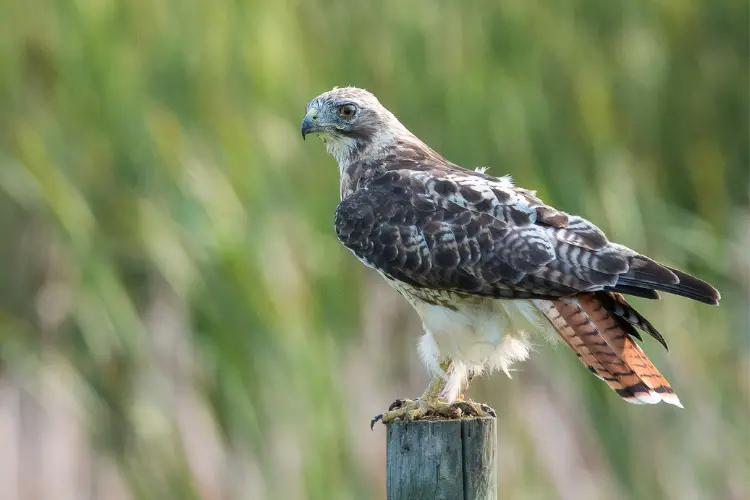
Critically Endangered South American Forest Birds
Exquisite birds like macaws, toucans and parrots now balance on the brink across South America as agriculture and logging destroy tropical forests.
24. Glaucous macaw. Bright turquoise South American parrots last reliably reported in the 1960s; likely extinct in the wild primarily due to trapping for the pet trade.
25. Spix’s macaw. Last seen in the wild in 2000. Habitat loss and trapping has left this brilliant cobalt-blue parrot extinct outside captivity with around 150 individuals in conservation breeding programs.
26. Red-browed Amazon. Striking green parrots with a prominent red patch above the beak, only around 2,500 adults remain in Brazil’s threatened Atlantic Forest.
27. Red-spectacled Amazon. This Venezuelan parrot with green body, yellow head and distinctive red eye patches has declined catastrophically alongside destruction of arid forests over the Orinoco River Basin. Likely fewer than 1,500 adults remain.
28. Blue-throated macaw. With turquoise plumage set off by amethyst throat patches, under 300 adults remain of this Bolivian endemic. Nests colonized by invasive bird species poses a threat.
29. Lear’s macaw. Bright turquoise with yellow cheeks, today around 1,300 adults exist after persistent habitat loss and trapping pressures. Conservation programs seek to restore dry woodland nesting habitat across northeastern Brazil.
30. Great green macaw. Specialized for feeding on mountain almond fruits within Central American cloud forests, under 1,500 breeding pairs likely remain today due primarily to deforestation.

Critically Endangered Grassland and Wetland Birds Worldwide
Habitat conversion spells catastrophe for endangered wetland species worldwide including cranes, spoonbills, ibises, rails and grebes that rely on varied grasslands and freshwater ecosystems.
31. Balearic bustard. This hen-sized ground bird inhabits Spain’s Balearic Islands and is vulnerable given its population likely totals under 425 adults. Agricultural intensification destroys its native grassland habitats.
32. Fatuhiva monarch. First described in 1928 but not filmed alive until 2021. Habitat degradation by introduced mammals leaves potentially no more than 77 breeding pairs on Fatu Hiva, part of the remote Marquesas Islands in French Polynesia.
33. Junín rail. With no more than 249 adults located around a single Andean lake and its tributaries, this secretive marsh bird faces an uncertain future. Water pollution from mining waste flows into its habitat.
34. Madagascar pochard. Thought extinct until rediscovered in 2006. No more than 200 waterfowl believed to survive within a sole lake ecosystem on Madagascar heavily impacted by siltation and invasive fish.
35. New Zealand black stilt. Intensive control of invasive predators has likely boosted surviving numbers for this endemic wading bird to between 100-200 total individuals remaining within braided river ecosystems on New Zealand’s South Island.
36. Northern bald ibis. Once abundant across Northern Africa, the Middle East and Southern Europe, conservation teams now guide remaining flocks during migration and manage breeding sites in Morocco to preserve global populations likely below 500 wild birds.
37. Red-breasted goose. Breeds on Siberian Arctic coasts and migrates down to southeast Europe and Asia over winter. Ongoing habitat threats and hunting impact this striking rusty-orange and black waterfowl species, likely leaving under 50,000 total adults remaining.
38. Spoon-billed sandpiper. This small shorebird with a unique spatula-shaped bill numbers fewer than 300 breeding pairs. It migrates from Arctic nesting areas down through Asia, where coastal wetland reclamation shrinks critical refueling stops.

Critically Endangered Forest Birds Around the World
From island endemics to mainland songbirds, forest birds in both hemispheres suffer from accelerating habitat loss as agriculture and logging degrades critical breeding and foraging habitats.
39. Black stilt. Deforestation combined with invasive predators leaves New Zealand’s rarest endemic wading bird with under 100 wild individuals remaining.
40. Cherry-throated tanager. This Brazilian endemic with a crimson red throat and breast against jet black only inhabits montane forest fragments totaling less than 234 square miles in area. Habitat loss puts its fewer than 50 remaining groups at dire risk.
41. Fatuhiva monarch. First described in 1928 but not filmed alive until 2021. Habitat degradation by introduced mammals leaves potentially no more than 77 breeding pairs on Fatu Hiva, part of the remote Marquesas Islands in French Polynesia.
42. Golden-cheeked warbler. Breeds only within juniper-oak woodlands of central Texas. Habitat destruction leaves just over 230 breeding pairs holding on across scattered fragments totaling under 22 square miles altogether.
43. Madagascar serpent-eagle. Fewer than 100 breeding pairs persist for this endemic raptor today. Its forest habitats face destruction for agriculture across much of the island.
44. Northern muriqui. Also called the wooly spider monkey, under 20 family groups of this large primate remain in Brazil’s dwindling Atlantic Forest. Hunting and habitat loss threaten populations.
45. Restinga antwren. Tiny insect-eating endemic birds restricted to isolated patches of critically threatened restinga forest along Brazil’s southeastern coast. Just two areas support an estimated fewer than 250 family groups clinging to survival.
46. Santa Marta parakeet. Once abundant in foothill forests of this unique mountain range isolated in northern Colombia, habitat loss leaves just 2000-5000 adults remaining.
47. Stresemann’s bristlefront. This thrush-like songbird survived undetected by science until the 1980s. Habitat destruction across a small coastal strip of southeastern Brazil leaves under 15 known groups persisting, but likely fewer than 50 adults remaining overall today.
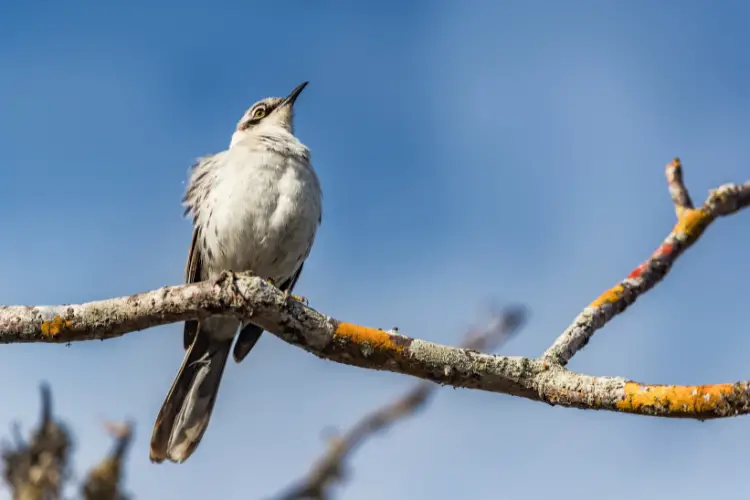
Critically Endangered Birds on Islands Big and Small
Endemic island birds face outsized threats from habitat loss, human encroachment and invasive species introductions. As a result some of the world’s most threatened birds barely cling to survival on small islands.
48. Bahama nuthatch. Tiny blue-grey songbirds today found only on Grand Bahama and Abaco Islands, where extensive habitat degradation leaves around 1700 adults remaining.
49. Black-hooded antwren. This Brazilian endemic now lives on only a single 180-acre reserve where Eucalyptus plantings degraded its unique restinga woodland habitat, leaving potentially 30 or fewer individuals remaining.
50. Marquesas ground-dove. Survives on a single island in French Polynesia where habitat destruction and predators jeopardize roughly 94 birds remaining in the wild.
51. Moorea reed-warbler. Last surveys found small isolated populations persisting within mangroves and other wetlands on Moorea and possibly one other Society Island. Introduced predators pose the greatest threat for this Polynesian endemic today.
52. Naso brachycentron. Also called the humphead wrasse, illegal fishing for this reef fish’s valuable fins combined with loss of coral ecosystems has earned this the dubious title of world’s most endangered marine fish species.
53. Negros bleeding heart. Fewer than 100 of these spectacular ground-dwelling doves remain across Negros and Panay Islands in the Philippines due to hunting and forest destruction.
54. Tahiti monarch. Spectacular black and white forest songbirds today restricted to the last old-growth fragments on Tahiti due to invasive species like rats that plunder nests. Intensive management and predator control seeks to boost maximum population estimates to around 800 birds.
55. Tuamotu sandpiper. Fewer than 150 total adults likely remain since these tiny shorebirds only breed on about six small coral islands within French Polynesia’s remote Tuamotu archipelago. Introduced predators jeopardize nesting attempts.
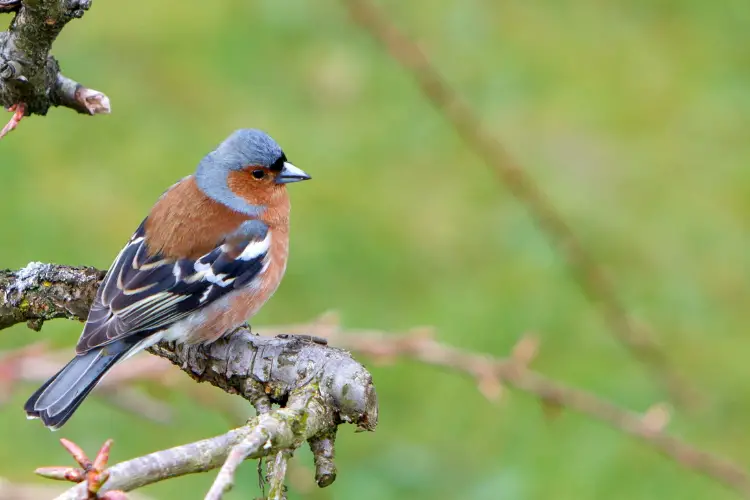
Other Globally Endangered Bird Species
Beyond these island and mainland forest birds, critically endangered waterfowl, songbirds, parrots and pigeons barely cling to survival worldwide. Habitat loss primarily threatens their limited populations.
56. Azores bullfinch. This dusky orange and black finch subspecies numbers fewer than 300 individuals today due to habitat loss and predation by invasive species that now limit them to Santiago Island of the Azores, Portugal, plus a reintroduced group on Sao Miguel Island.
57. Blue-bearded helmetcrest. Tiny iridescent green hummingbirds whose specialized habitat reaches no more than 19 square miles across Venezuela and Colombia. Logging and agriculture jeopardize some 20 isolated populations totaling fewer than 750 adults.
58. Brazilian merganser. Among the world’s rarest waterfowl, fewer than 250 adults of this long-crested river duck remain in forested waterways of Brazil’s Serra do Espinhaço highlands. Their limited distribution and dependence on pristine running waters puts them at high risk.
59. Liverpool pigeon. Restricted to the last remaining old-growth forest fragments on the island of New Caledonia, this isolated tropical Pacific island group east of Australia holds fewer than 150 total adults.
60. Mauritius olive white-eye. Tiny grey songbirds today restricted to a single introduced pine plantation on Mauritius now support the entire species’ population following historical forest destruction. Fewer than 22 breeding pairs remain following recent declines.
61. Negros fruit-dove. These spectacular green-and-silver birds once widespread in the Philippines now number fewer than 100 individuals restricted to tiny forest patches scattered across Negros and Panay Islands.
62. Pink pigeon. Remarkable conservation efforts have pulled this species back from just nine wild birds in the 1990s. Intensive management now maintains wild populations likely around 500 on the islands of Mauritius and Ile aux Aigrettes.
63. Regent honeyeater. Striking black and golden-yellow nectar feeders today restricted to scattered sites across southeastern Australia with just a few hundred to a few thousand scattered adults remaining as habitat loss continues.
64. Rufous-fronted antthrush. This Brazilian endemic faces habitat destruction across its limited range in São Paulo. It likely numbers fewer than 50 scattered groups today at continued risk.
65. Schmidt’s yellow-bellied sapsucker. Rarest members of the woodpecker family, fewer than 50 adults remain in the wild for this striking yellow-bellied bird today due to aggressive trapping for the caged bird trade on the Indonesian island of Sulawesi.
66. Sihek mangabey. Rare specialized monkeys restricted to mangrove forest patches along West Africa’s Gulf of Guinea. Just over 1,000 individuals likely remain at continued risk due to coastal development and hunting pressures.
67. South Island kōkako. Last reliably observed in 2007, this slate grey songbird of New Zealand may still persist in remote southern beech forests of the country’s South Island. Extensive surveys this decade seek to verify whether any of the fewer than 100 estimated individuals endure.
68. Sumatran laughingthrush. These vibrant crimson songbirds inhabit subalpine forests across the Barisan mountain range of western Sumatra. Habitat loss leaves fewer than 1,200 total adults remaining today in Indonesia.
69. Western bristlebird. Persecuted by introduced predators like foxes and feral cats, fewer than 500 singing males likely remain across scattered sites in Western Australia for one of that continent’s rarest songbirds.
70. Yellow-eared parrot. Distinctive bright green parrots with a prominent yellow cheek patch today number over 4,000 adults across Columbia’s Andes thanks to intensive community conservation efforts. Their localized island breeding habitat faces agriculture and grazing threats.
Conclusion
As these 70 examples make clear, extinction now threatens an ever-growing diversity of birds on continents and islands worldwide. Intensive management informed by scientific research offers the best hope that future generations may welcome some of these avian treasures back from the abyss.
But securing many endangered species’ futures ultimately requires preserving vast intact habitats where birds and other wildlife can freely roam and find refuge in to face intensifying human pressures worldwide.

